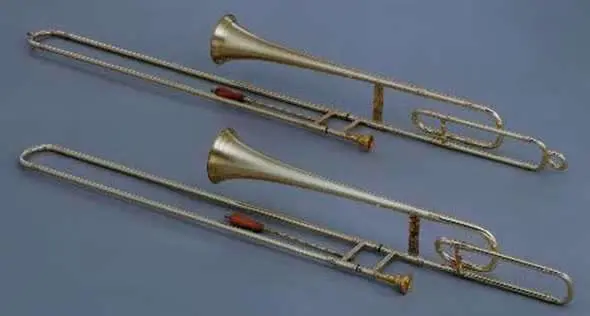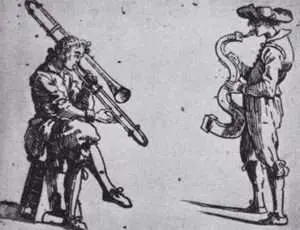
History of the trombone
Trombone – wind musical instrument. Known in Europe since the 15th century, although in ancient times several pipes made of metal and having curved and straight shapes were practiced, in fact they were the distant ancestors of the trombone. For example, a horn in Assyria, large and small pipes made of bronze, were used to play in ancient China at the court and in military campaigns. In ancient culture, the predecessor of the instrument is also found. In ancient Greece, the salpinx, a straight metal trumpet; in Rome, the tuba directa, a sacred trumpet with a low sound. During the excavations of Pompeii (according to historical information, the ancient Greek city ceased to exist under the ashes of the volcano Vesuvius in 79 BC), several bronze instruments similar to a trombone were found, most likely they were “large” pipes that were in cases , had golden mouthpieces and were adorned with precious stones. Trombone means “big trumpet” in Italian.
The rocker pipe (sakbut) is the immediate ancestor of the trombone. By moving the pipe back and forth, the player could change the volume of air in the instrument, which made it possible to extract sounds that were called the chromatic scale. The sound in timbre was similar to the timbre of the human voice, so these pipes were widely used in the church choir to enhance the sound and dub the lower voices. Since its inception, the appearance of the trombone has not changed much. The sakbut (essentially a trombone) was somewhat smaller than a modern instrument, with different register sounds (bass, tenor, soprano, alto). Due to its sound, it began to be constantly used in orchestras. When the sacbuts were refined and improved, this gave impetus to the emergence of the modern trombone (from the Italian word “Trombone” in translation “big pipe”) known to us.
Since its inception, the appearance of the trombone has not changed much. The sakbut (essentially a trombone) was somewhat smaller than a modern instrument, with different register sounds (bass, tenor, soprano, alto). Due to its sound, it began to be constantly used in orchestras. When the sacbuts were refined and improved, this gave impetus to the emergence of the modern trombone (from the Italian word “Trombone” in translation “big pipe”) known to us.
Types of trombones
The orchestras mainly had three types of trombones: alto, tenor, bass.  When sounding, a dark, gloomy and gloomy timbre was obtained at the same time, this gave rise to an association with a supernatural, powerful force, it was customary to use them in symbolic episodes of an opera performance. The trombone was popular with Mozart, Beethoven, Gluck, Wagner, Tchaikovsky, Berlioz. It became widespread thanks to the many wandering ensembles and orchestras of wind instruments, giving performances in Europe and America.
When sounding, a dark, gloomy and gloomy timbre was obtained at the same time, this gave rise to an association with a supernatural, powerful force, it was customary to use them in symbolic episodes of an opera performance. The trombone was popular with Mozart, Beethoven, Gluck, Wagner, Tchaikovsky, Berlioz. It became widespread thanks to the many wandering ensembles and orchestras of wind instruments, giving performances in Europe and America.
The era of romanticism drew attention to the outstanding possibilities of the trombone by many composers. They said about the instrument that it was endowed with a powerful, expressive, sublime sound, it began to be used more often in large musical scenes. In the first half of the 19th century, solo performance to the accompaniment of a trombone became popular (famous trombonist soloists F. Belke, K. Queiser, M. Nabih, A. Dieppo, F. Cioffi). A large number of concert literature and works of composers are being created.
In modern times, there is a renewed interest in the sacbuts (ancient trombone) and its various forms that were popular in antiquity.





